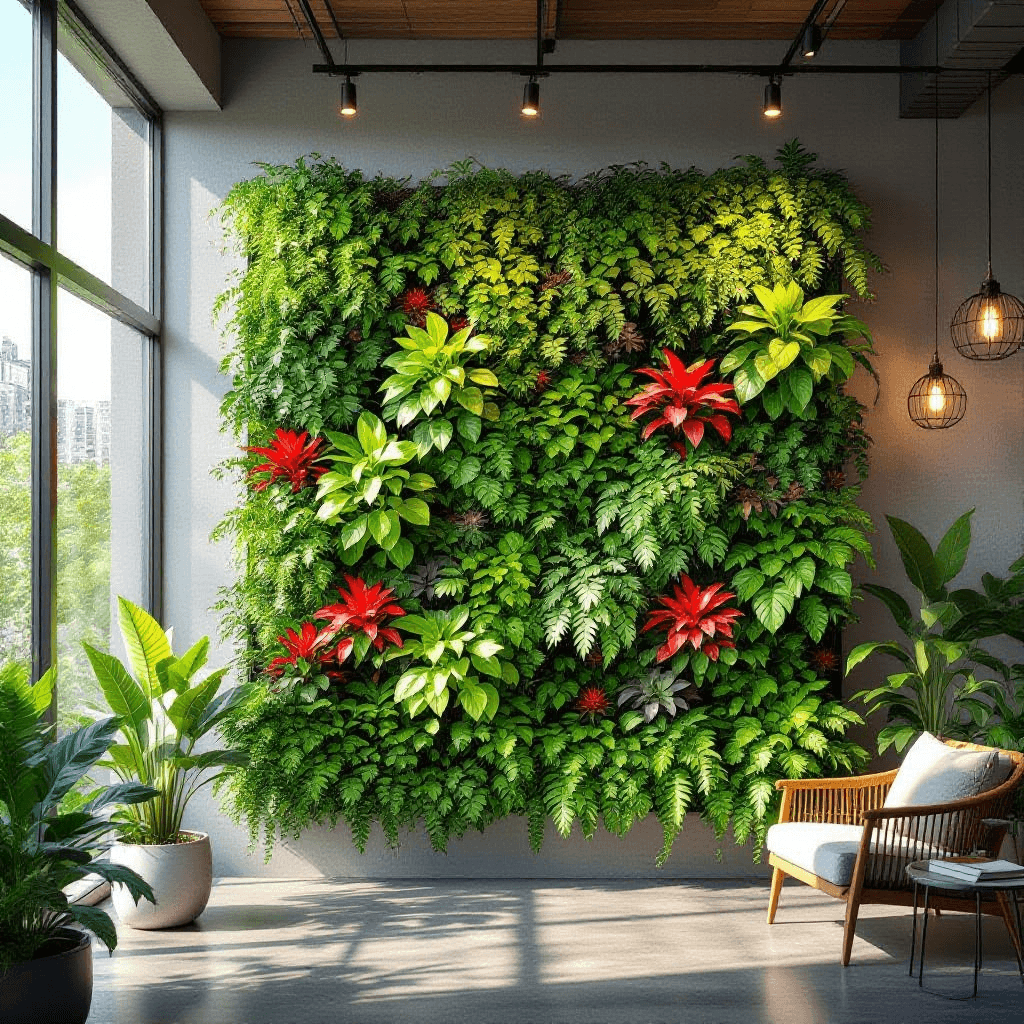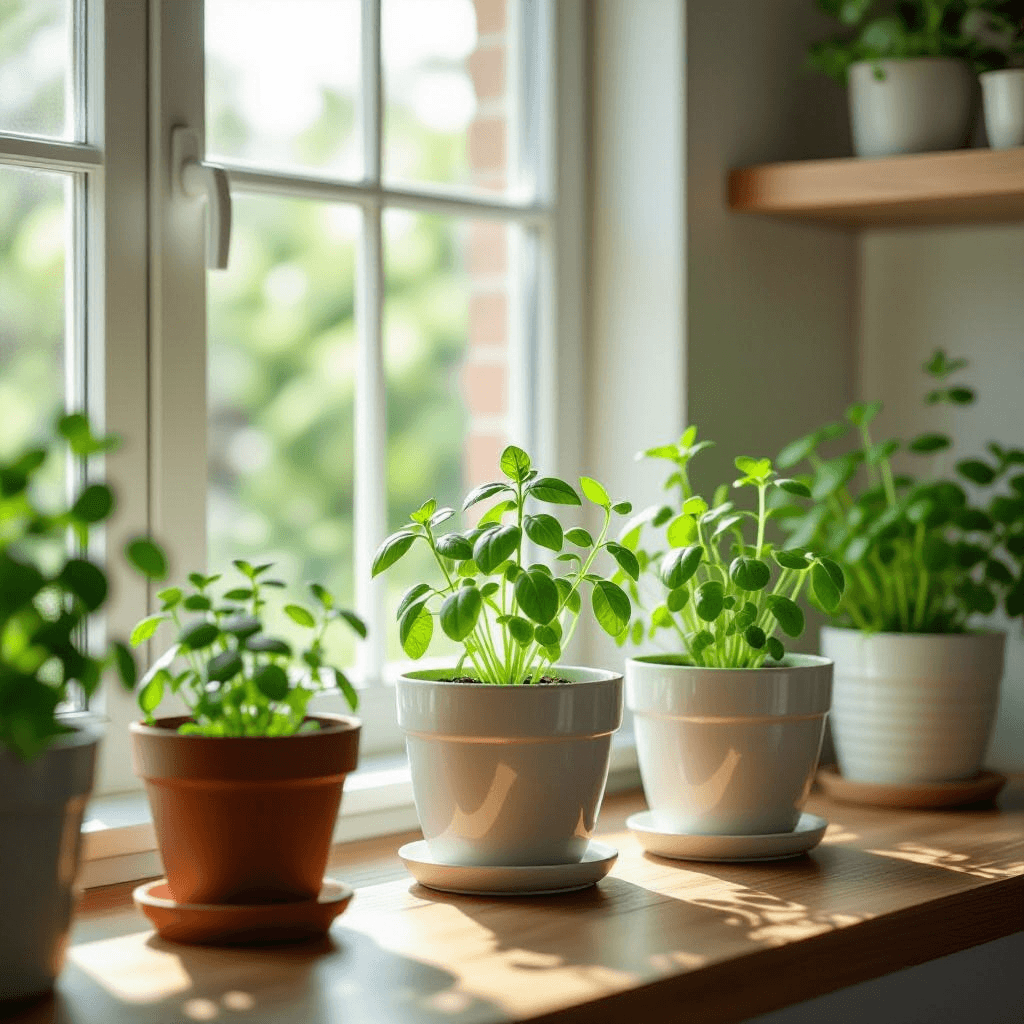Understanding Vertical Gardens
Vertical gardens, often referred to as living walls or green screens, represent an innovative approach to incorporating nature into urban living spaces. These systems allow homeowners to transform bland wall surfaces into vibrant, green displays by utilizing vertical gardening techniques. Vertical gardens can vary widely in design and execution, ranging from simple trellises covered with climbing plants to highly engineered wall structures that support a diverse array of vegetation.
One of the primary benefits of vertical gardening is the substantial improvement it can bring to indoor air quality. Plants naturally filter carbon dioxide and release oxygen, contributing to a healthier atmosphere in enclosed spaces. Furthermore, they can absorb harmful pollutants, providing a fresh and clean environment that promotes overall well-being. The aesthetic appeal of vertical gardens is another significant draw. The lush greenery can serve as a striking focal point or add subtle beauty to a room, enhancing the interior design without the need for additional floor space.
Maximizing space usage is a crucial advantage of vertical gardens, particularly in urban settings where real estate is limited. By utilizing wall surfaces, homeowners can grow a variety of plants without sacrificing valuable square footage. Certain plant varieties are particularly well-suited for vertical gardening; for example, ferns, succulents, and various herbs thrive in a vertical environment. These selections not only add visual interest but also contribute to the overall ecosystem of living walls, offering food and habitats for beneficial insects and promoting biodiversity.
In conclusion, vertical gardens offer a multitude of benefits, making them an excellent addition to modern homes. Their ability to improve air quality, enhance aesthetics, and maximize space utilization underscores the importance of this innovative gardening technique. With careful planning and the selection of appropriate plants, anyone can create a thriving vertical garden that elevates their living space.
Planning Your Vertical Garden
Creating a successful vertical garden requires thorough planning to ensure the integration of greenery enhances your living space while meeting the needs of the plants. The initial step is to assess the available space in your home. Consider walls, fences, or any vertical surfaces where a garden can thrive. It is crucial to measure these areas accurately, taking into account the dimensions and weight support of any structures chosen for your vertical garden setup.
Next, determining the right location based on light and moisture levels is essential. Most plants require adequate sunlight to flourish, thus identifying areas that receive consistent natural light throughout the day is vital. Alternatively, if you have limited sunlight, you may want to explore low-light plants or use artificial grow lights. Additionally, observe moisture levels; a location that is too dry may necessitate extra watering, while areas with high humidity may suit moisture-loving plants.
An aesthetically pleasing design should complement your home’s style and color scheme. Sketching ideas or using design software can help visualize how the vertical garden will integrate with existing decor. Furthermore, consider creating a mixed garden by using various plant types, textures, and colors to create visual interest and depth.
Choosing suitable plants is integral to the success of your vertical garden. Factors such as the climatic zone, height of plants, and growth habits should guide your selections. Common options include herbs, succulents, ferns, and flowering plants, each bringing unique characteristics to your living wall. Finally, gather all necessary materials and tools, such as planting containers, soil, and irrigation systems, to facilitate a smooth installation process. By following these planning steps, you will lay a strong foundation for a flourishing vertical garden in your home.
Building Your Vertical Garden
Constructing a vertical garden can transform an ordinary wall into a living masterpiece, but it requires careful planning and a step-by-step approach. Begin by selecting a wall or space where the vertical garden will thrive, ensuring it receives sufficient sunlight for the chosen plants. Preparing the wall involves cleaning the surface and, if necessary, applying a protective coat to prevent water damage.
Once the wall is ready, decide on the installation method. Three popular approaches are trellises, wall planters, and modular systems. If you opt for trellises, select a sturdy material like wood or metal. Secure the trellis to the wall, using appropriate anchors to support the weight of the plants and soil. For wall planters, consider pre-manufactured vertical planters that can be easily mounted to the wall. Be sure they are made of durable materials that can withstand moisture.
Modular systems offer another versatile option, consisting of small containers that can be arranged in various configurations. These systems generally come with integrated irrigation solutions, making them a user-friendly choice for beginners. Regardless of the method chosen, the next step involves planting. Prepare a suitable potting mix that promotes healthy root growth and ensures proper drainage.
When planting, carefully select plants suited for vertical gardening. Consider factors such as their growth habit and sunlight requirement. As you plant, ensure there is adequate space between each plant for air circulation. Finally, implement an irrigation system that meets the needs of your vertical garden. Drip irrigation is an efficient option, as it delivers water directly to the root zones while minimizing waste.
With these steps completed, your vertical garden should be prepared to flourish, contributing greenery to your home and creating a serene atmosphere.
Maintaining Your Vertical Garden
Once you have established your vertical garden, ongoing maintenance is crucial to ensure its longevity and vibrancy. A well-maintained living wall can enhance both the aesthetic value of your home and the overall health of its environment. Regular maintenance involves several key aspects, including watering techniques, fertilization schedules, pest management, pruning, and seasonal care.
Watering is vital for the health of your vertical garden. Depending on the type of plants selected and the climate conditions, a consistent watering schedule should be established. It is recommended to check the moisture levels in the growing medium regularly; finger testing or a moisture meter can be helpful in determining when to water. During hotter months, you may need to water more frequently. Conversely, in cooler months, the frequency may be reduced to avoid waterlogging, which can threaten root health.
Fertilization is another important component of maintaining your vertical garden. A balanced liquid fertilizer can be applied every few weeks during the growing season to provide essential nutrients for your plants. Pay attention to the specific nutritional needs of your selected species, as some may require specific micronutrients or have different fertilization sensitivities.
Pest management is essential for a thriving vertical garden. Regular inspections are advisable to identify any signs of pests or diseases early on. Consider using organic pest control methods, such as neem oil or insecticidal soap, to minimize harm to both the plants and beneficial insects. Keeping the area around the garden clean can also help prevent infestations.
Pruning is vital to promoting healthy growth and ensuring that your garden remains visually appealing. Regularly trimming back overgrown branches encourages bushiness and allows light to reach lower leaves. Finally, be mindful of seasonal care; many plants require different care depending on the season, so adjustments should be made to watering and fertilization schedules accordingly. By dedicating time to these maintenance activities, you can enjoy a flourishing vertical garden throughout the year.


